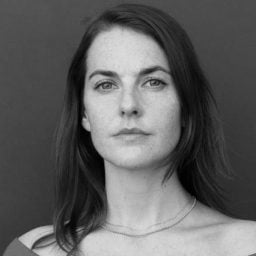Artists
Alicja Kwade’s New ‘Mystic’ Sculptures Will Confront the Titan of Minimalism Agnes Martin
The dual presentation of work is being curated by Pace founder Arne Glimcher.
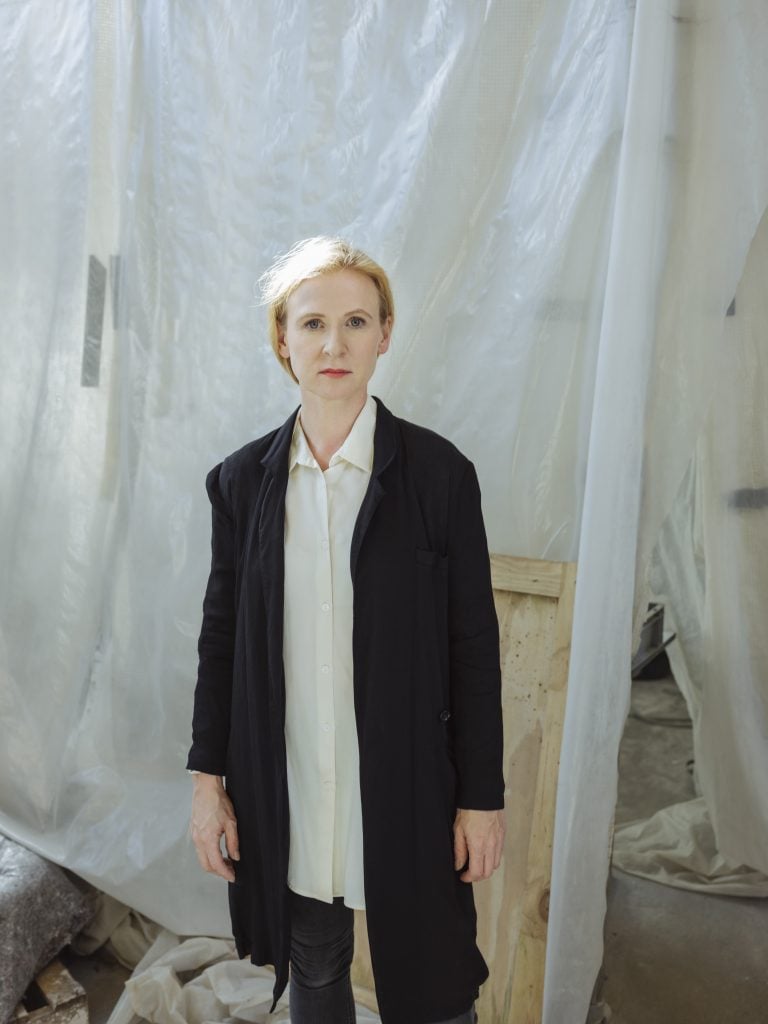
“It’s probably some point in the early 1960s,” Alicja Kwade tells me, setting the scene of a bygone party at which Pace’s founder, Arne Glimcher, had first met the pre-eminent minimalist painter Agnes Martin. It all sounds sublimely Mad Men: people drinking and dancing in an apartment donned (pun intended) with bare brick walls and mid-century modern furniture, at six o’clock in the morning. Kwade continues to relay the mood of the night. “It was super loud, and he saw this woman just sitting alone at the table, lost in thought. He took a seat beside her, and they conversed until the early hours of the morning, forming a friendship.”
Glimcher told this story to Kwade over lunch one day while they were planning the upcoming exhibition “Alicja Kwade and Agnes Martin: Space Between the Lines,” which opens at Pace’s Los Angeles gallery (on view from May 18 through June 29), curated by Glimcher. Probing Kwade on why she thinks the dealer chose to pair her work with Martin’s, she said that Glimcher “explained to me why he thinks there are so many connections, which I hadn’t initially seen: it’s about the lines, the framing; the minimalistic, poetic, mystic things.”
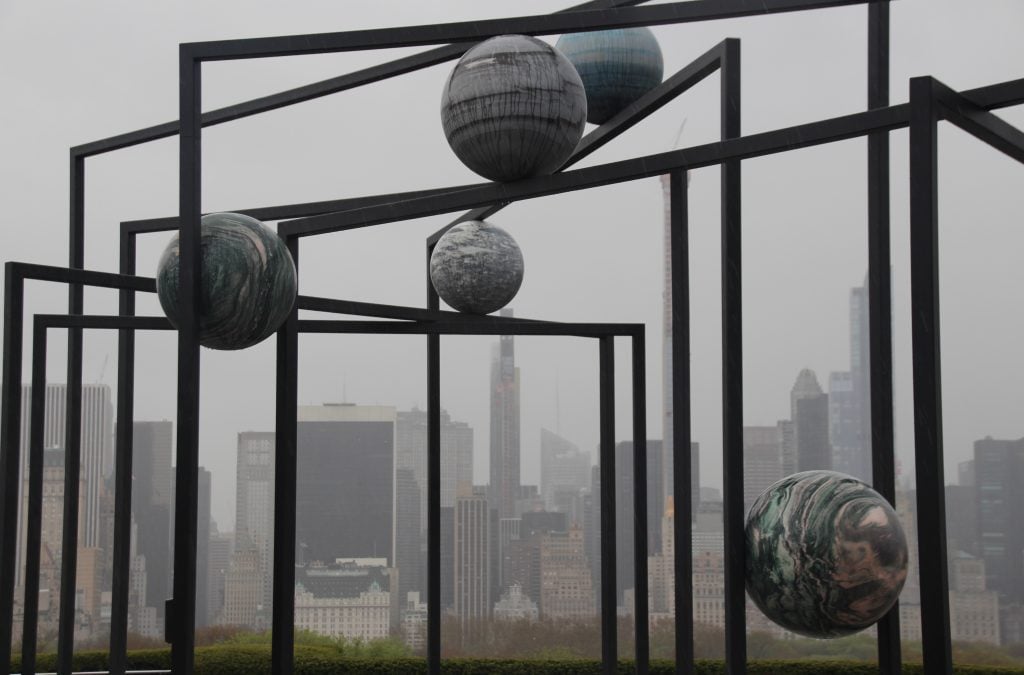
A sculpture by Berlin-based artist Alicja Kwade stands on the roof terrace of the New York Metropolitan Museum. Photo: Christina Horsten/dpa via Getty Images.
For one thing, there is Martin’s interest in the natural world, and her use of painterly combinations of geometric and abstract aesthetics to rouse emotions in the viewer certainly chimes with Kwade’s own conceptual works of object-oriented ontology. These have their own geometry and often integrate organic forms like rocks or tree trunks to center our lived experience and perception, exposing the underlying constructions of our reality. I can see how Glimcher’s keen eye connected the two, and it’s a smart combination. It also reinforces Kwade’s practice for a West Coast audience—her work was previously included in a group exhibition at the Los Angeles County Museum of Art in 2021, and the institution’s permanent collection is home to one of her sculptures. Yet the artist has had far wider exposure in her native Europe.

Agnes Martin, Untitled (ca. 1960). © Estate of Agnes Martin / Artists Rights Society (ARS), New York.
Glimcher was in his early 20s when he first met Martin at the artist Jack Youngerman’s loft in 1963 and the two became lifelong friends, with Glimcher also representing Martin for the majority of her career. She had already presented a debut solo exhibition in 1958 at Betty Parsons Gallery in New York (when she was 46), but like many of her female contemporaries in a male-dominated market, Martin’s ascension came much later: her first exhibition at Pace Gallery in 1975 was followed by participation in the Venice Biennale in 1976, and a retrospective at London’s Hayward Gallery in 1977. Now, almost 20 years after her death, Martin’s work fetches auction prices as high as $18.7 million, as was the case with Grey Stone II (1961), which sold in Fall 2023 as part of Sotheby’s Emily Fisher Landau sale.
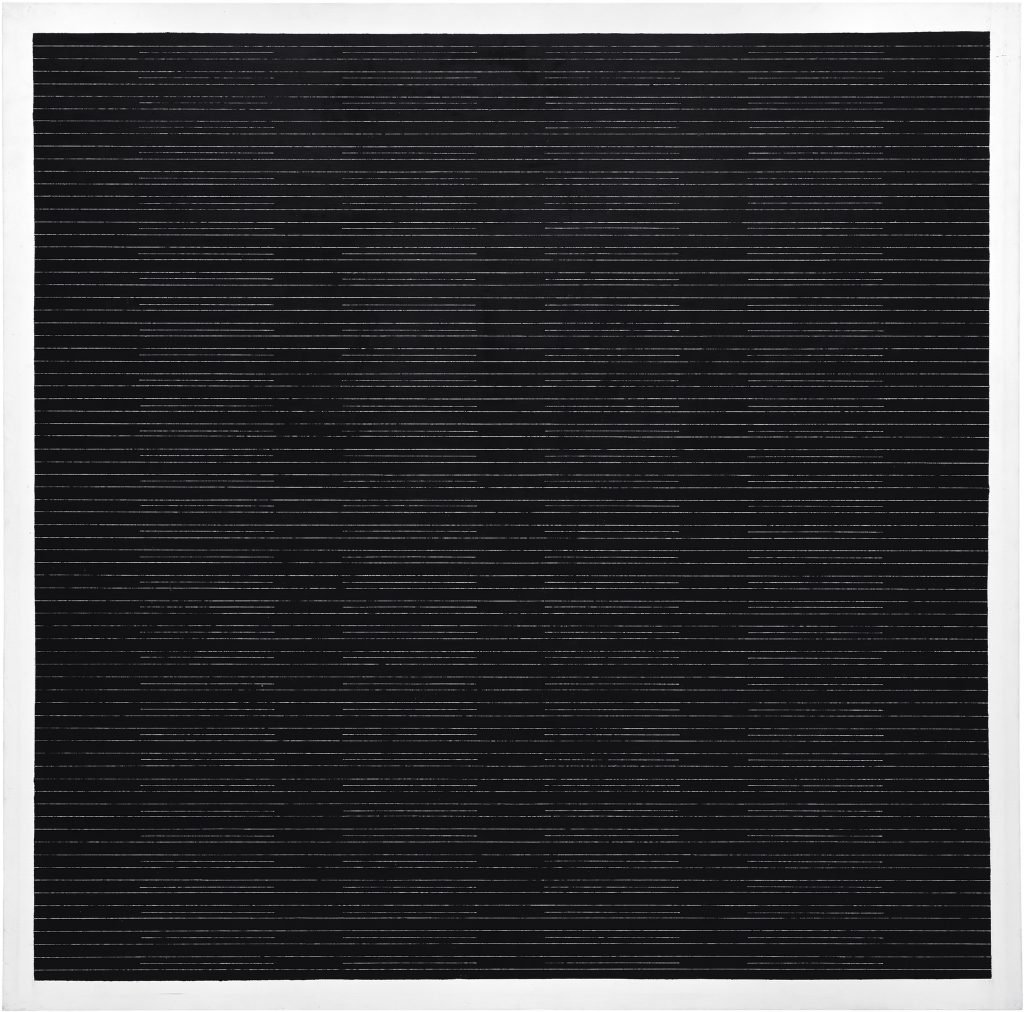
Agnes Martin, The Sea (2003). © Estate of Agnes Martin / Artists Rights Society (ARS), New York. Courtesy of Pace.
For “Space Between the Lines,” Glimcher has selected a tour de force by including Martin’s only entirely black painting, The Sea (2003). A rhythmic hum of lines is incised into a dark monochrome, with four ghostly columns conjuring a pulsing of waves or the lapping of water. Per the exhibition’s title, it’s precisely the reverberation of black density between these lines that offsets Kwade’s two new large-scale sculptures that were made especially for the show, Distorted Dream and Distorted Day (both 2024). In these, carved stones seem to be floating amid black powder-coated steel frames, and it’s easy to imagine the horizon bands of New Mexico’s desert within them—where Martin lived for almost four decades.
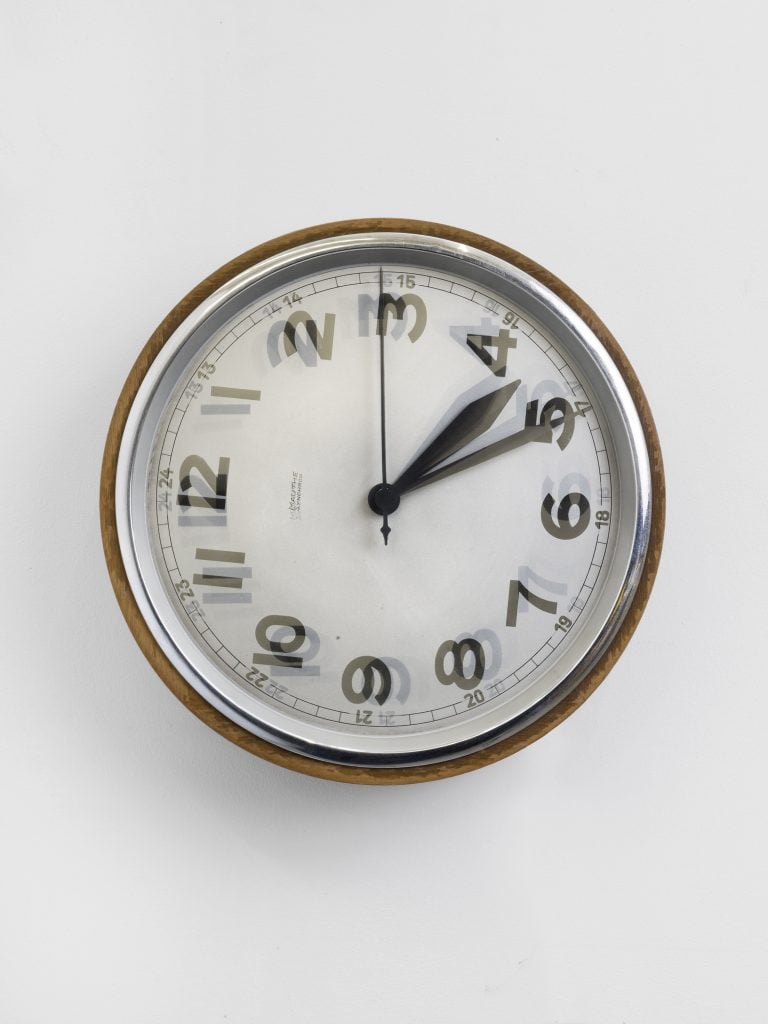
Alicja Kwade, Gegen den Lauf, 2022. © Alicja Kwade, courtesy Pace Gallery.
With regards to her own practice, Kwade emphasizes that “the in-between is more important for me than the line itself. I’m trying to map and frame. [Space Between Lines] is also a time-connected term, and in a lot of ways, my work is time-connected.” Kwade’s sculpture Gegen den Lauf (Against the Run, 2022), which will span an entire room within the show, sets into motion a sequence of wall-mounted clocks where the faces rather than the hands move, discombobulating the viewer’s sense of orientation by exchanging one system for another. “I’m not trying to invent anything, but to unroll it,” she says.
The shifting nature of perception and reality has concerned Kwade from the start. Born in Poland in 1979, her family escaped to West Germany in 1987, after which she moved to Berlin at the age of 19 to study sculpture at the Berlin University of the Arts. One of the first works by Kwade that I experienced was in her 2013 exhibition “Nach Osten” (To the East) at König Galerie in Berlin’s St. Agnes church. An enormous swinging light bulb intermittently illuminated the vast space, compounded by an unnerving sound installation. Based on Foucault’s pendulum—an experiment that demonstrated the Earth’s rotation with simple and direct revolutions—in Kwade’s hands, the cavernous expanse became both confounding and awe-inspiring amid whooshing light that increased with ferocity, momentarily interrupting the darkness.
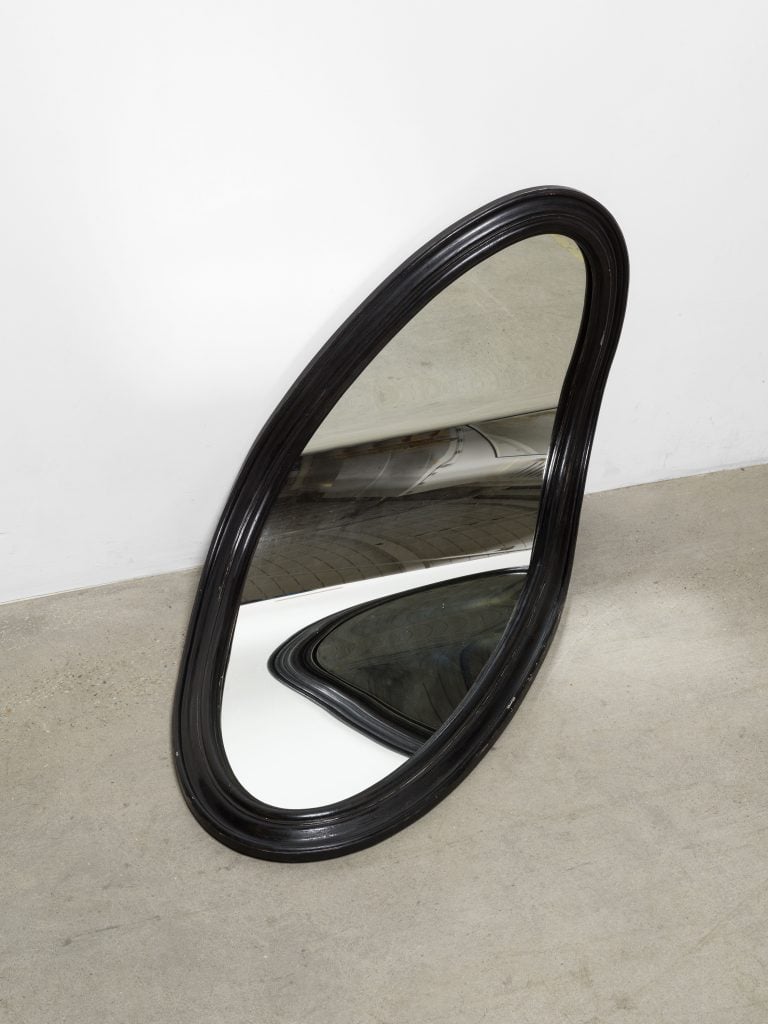
Alicja Kwade, Unexplained Option, 2011. © Alicja Kwade, courtesy Pace Gallery.
Having parted ways with dealer Johann König in 2023 to join Pace’s ever-growing empire (the gallery recently opened a new outpost in Berlin, and this year will launch its first space in Tokyo), Kwade has her eyes on new horizons. Alongside her current exhibition at Museum Voorlinden in the Netherlands, “Die Notwendigkeit der Dinge” (The Necessity of Things), which includes nearly 30 works and runs through June 9, Kwade is creating a new installation for Tai Kwun Contemporary in Hong Kong later this year. Responding directly to the institution’s former life as the Central Police Station Compound, Kwade will present a series of stand-alone rooms equivalent to the size of the cells, which use glass bricks to form translucent cubicles into which viewers can venture, at once observable and observing.
What has changed for Kwade as she navigates this upward spiral in her career, I ask her? “I am more inclined to let my own personality, thoughts, fears, or emotions seep in, even if only slightly,”
she says. “In the past, I observed from an outsider’s perspective: observing humanity, our planet, and reality itself.” And while this may not go as far as what Martin once said to Glimcher— “I’m renouncing the intellect completely”— it underlines a shift that further connects the two artists, as Kwade so neatly puts it: “being able to create emotions.”

